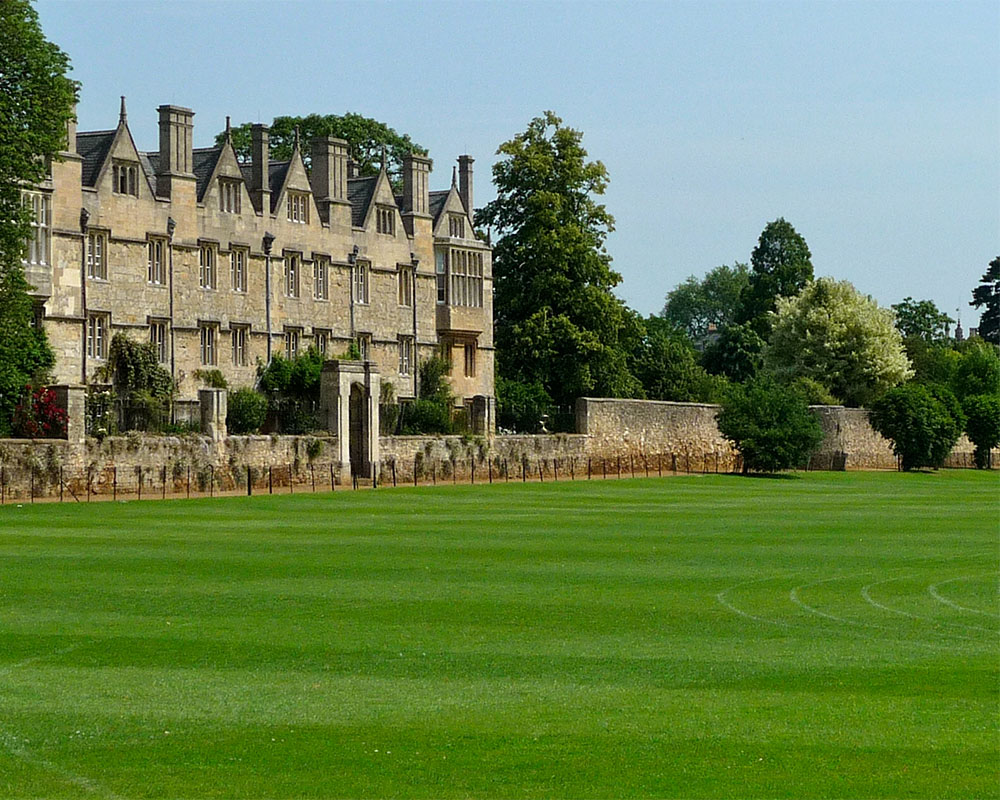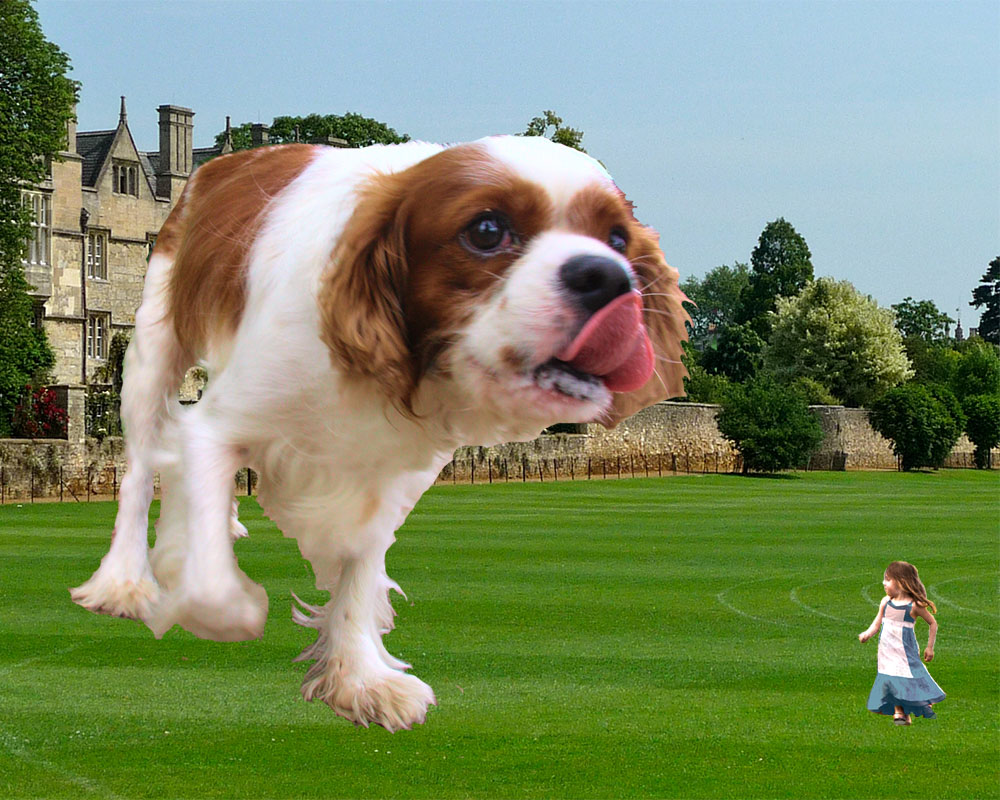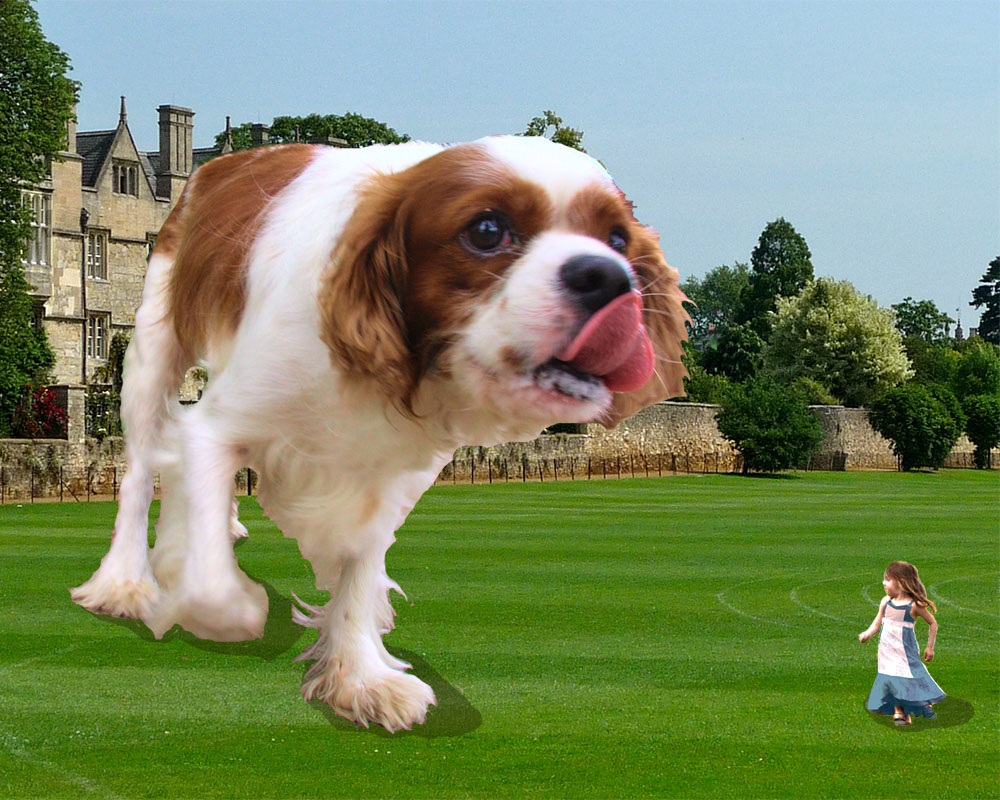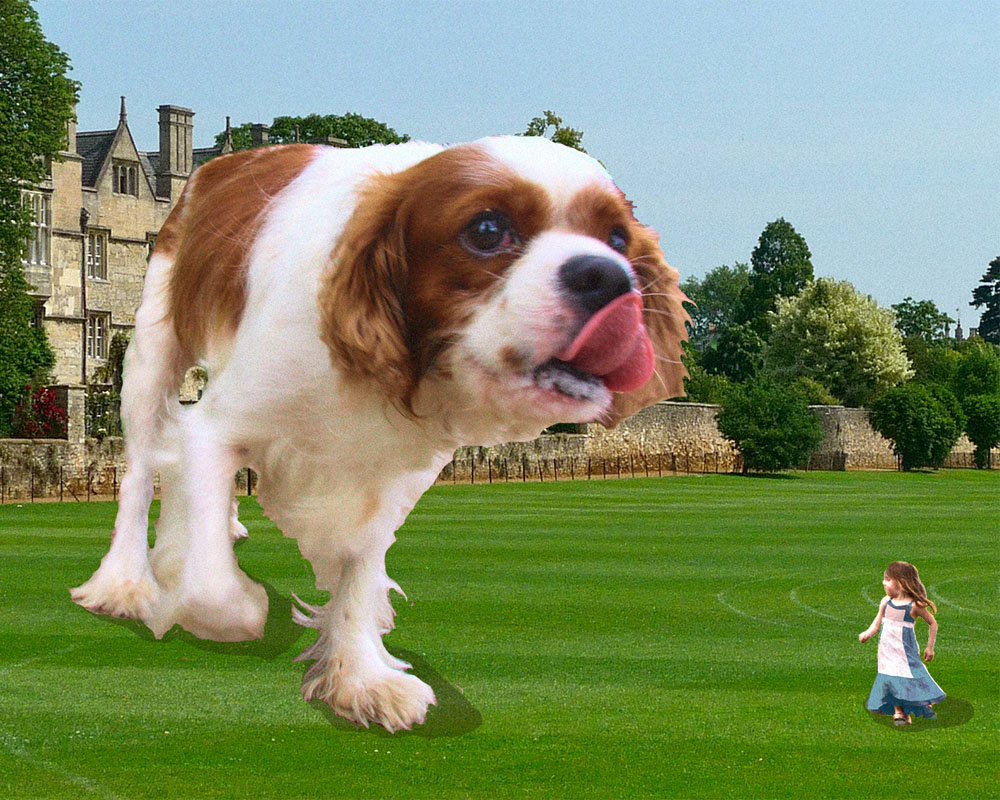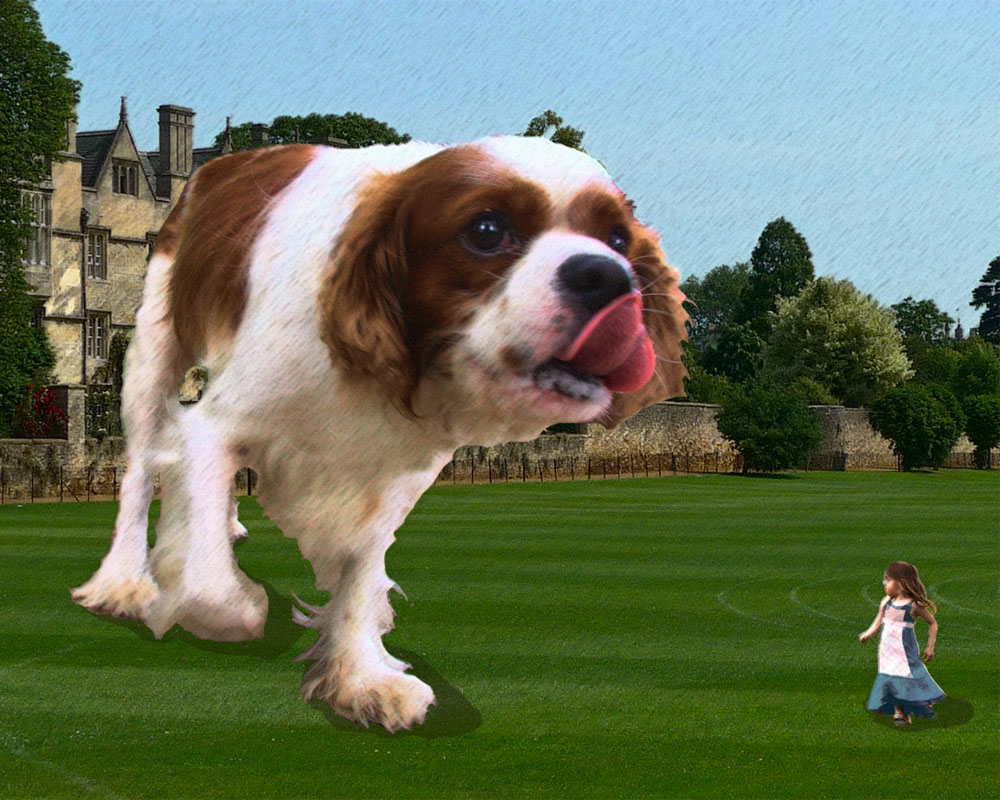CUT TO: EXT, Alice, fleeing from Wonderland's inhabitants now that she is once again tiny. A bark makes her look up. A giant puppy is bearing down on her. Alice throws a stick to distract him and runs away.
ALICE
(after having run far from the puppy)
And yet what a dear little puppy it was! I should have liked teaching it tricks very much, if—if I'd only been the right size to do it! Oh dear! I'd nearly forgotten that I've got to grow up again! Let me see—how IS it to be managed? I suppose I ought to eat or drink something or other; but the great question is, what?
Here, Alice confronts a normal element of her real world, but from a new perspective: she is not the "right" size for puppies. Modern interpreters of Alice draw upon that space between realism and wonder, as in Maggie Taylor's digital collage illustrations for "Almost Alice." Her work draws on existing photographs and found objects, recombined to create dream-like landscapes such as Alice's arm reaching out of a thatched cottage. This style of combining the real to create postmodern illusions is so iconic of digital work processes, and particularly of Photoshop, that a volume in the Adobe Photoshop Master Class series is dedicated to her work.
(describing her rules for creating dreamscapes through remixing in an interview before her Alice project)
I don’t think it’s random... the images have to make some sense to me not only visually, but literally, for me to be happy with them. There has to be some story in my mind about why the rabbit is wearing the blindfold, and why the coffee cup is there and why it’s steaming. There has to be a strange kind of logic to it. (qtd. in Standen 140)
This method is well suited to re-imagining Wonderland as a remediation of reality through a different lens. Photoshop (and equivalent tools for film) keep the appearance of the real without the bindings of real perspective or "truthful" representation to tie Alice to a physical identity.
(in considering Photoshop as the "cut and paste" tool for making the postmodern)
Endless recycling and quoting of past media content, artistic styles, and forms became the new "international style" and the new cultural logic of modern society. Rather than assembling more media recordings of reality, culture is now busy reworking, recombining, and analyzing already accumulated media material. (131)
CUT TO: EXT, Alice, in a postmodern landscape re-assembled, running from Tenniel's White Rabbit through a black-and-white forest, backed by a technicolor sunset. As we move with Alice from Dodgson's photograph, to film, and back to "photography" again, Alice is at the heart of a remix. The further we follow her down the rabbit hole, the more familiar (and yet unlikely) it becomes.
< — Back
